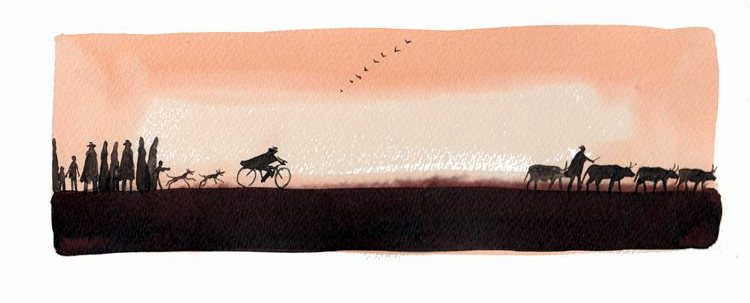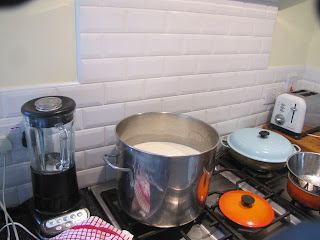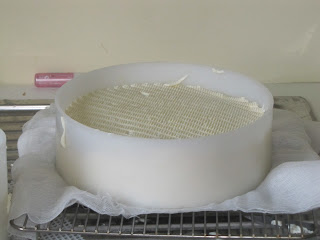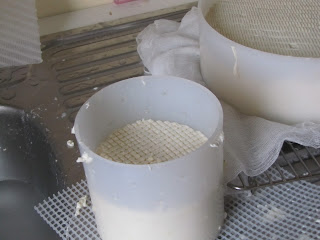Livermore is, without doubt, a nice place to live. On the Eastern edge of California’s San Francisco Bay Area, the town is cultured
suburbia with a little bit of wine country and a little bit of ranching. A little bit country, a little bit rock and
roll. At one end of town are the renowned
Concannon Vineyards and the other end is the Livermore-Pleasanton fire station.
The flag of the United States flies gently on the pristine white pole outside the picket
fenced, fire Station. The doors are
rolled up and ready and two big red diesel engines sit inside. I knock politely but ineffectively on the
wall and say ‘hello, anybody home?’
Silence. The night before I
had met with Lynn Owens the fire chief and he invited me to call along at any time. So here I was.
There are fireman suits
hanging on the walls and someone had been cleaning one of the metal cutting
machines before, presumably, he had taken his coffee break. Even though it is quite dark inside
everything is still very shiny. The
floor gleams, rows of helmets picks up shards of light and the chrome on the
engines reflects the red surrounds.
But this is not the light I’m
looking for – ‘You can’t miss it’ Chief Owens had said ‘It’s exactly where
everyone in the world is’.
And there indeed, it
was. Hanging by a short wire from the
ceiling, ironically upstaged by a fluorescent lamp, was the least impactful,
world record I had ever seen. It was the
world’s longest lasting light bulb. It
was turned on first in 1901 to light the way to the fire engines and it has
never gone out since – with the exception of three power failures and two
building transfers.
This, however, is not a very
unusual occurrence as there are many more, probably hundreds, of what are known
as centenary bulbs, bulbs lit for more than 100 years, dotted all over the U.S
and Europe. Back in the day, they were
blown glass with tungsten filaments.
They were built to last. There is
a web cam pointed at the Livermore
light and, with delicious irony, this is the third web cam, the first two have
burnt out.
In the first few decades of
the 20th century the competition was fierce to make the longest
lasting bulb. When Edison
launched his first bulb, it advertised 1500 bright hours. It wasn’t long before Philips was offering a
bulb that gave you 2500 hours and there was talk of an eastern European bulb
that would do 10000 hours. Clearly they
were competing themselves out of business.
In 1924 in Geneva a cartel called Phoebus was formed by the world’s
light bulb manufacturers with one express purpose – to reduce the lifespan of
the light bulb. By the end of the conference all had agreed to reduce the life
span of their bulbs to a maximum 1000 hours.
For many companies it meant spending more money to reduce the quality
and life expectancy of the bulbs but within a few years that had all achieved
their goal.
The theory of ‘built in
obsolescence’ became integral to the American economy and a serious contributor
to her financial recovery. The
manufacturers of toasters, radios, clothes and probably most importantly the
automobile industry warmly embraced the planned depreciation of their
products. The increase in production and
sales was used as justification for this borderline malpractice.
But that was at a time of
abundance, a time of limitless resources, the start of the consumer society. Style, fashion and design were the words of
the day as people started shopping for pleasure rather than out of necessity.
Ironically again, the light
bulb has always been the symbol for good ideas and innovation and yet it is one
of the earliest and best examples of planned obsolescence.
And now, 80 years later we
are being legally bound to leave the traditional light bulb behind to move to
CFL light bulbs. They cost 10 times the
price and last about as long as they did in 1924. They don’t fit most of my lamps, they have
mercury in them so if you break one you should, technically, call the EPA, they
take forever to come on and give off a weird blue light. But I hate them mostly because I feel I’m
being conned. And I hate it mostly
because our choice is gone.
.
On the face of it, bulbs that last longer can
only be a good thing right? But little
research has been done and no-one appears to have looked at the history. We stand outside beneath electric patio
heaters and we ban 60w bulbs.
This is obsolescence with
muscle. This is all the eco Nazis dancing
at the same time for the man. No one has
done an ounce of research.
The top five CFL
manufacturers that will benefit from this law are Osram, General Electric,
Philips, Ushio and Full Spectrum. These is
an uncomfortable overlap with the companies who started Phoebus in Geneva 85 years ago. Surely,
surely this is a lucky coincidence.
I leave the
Livermore-Pleasanton fire station and head down First St. to the Espresso Yourself Coffee Shop to attempt to recharge
my fried brain. I am trying to make sense of it all and almost in reaction to
the epic stupidity, to the gargantuan corporate manipulation, I find myself writing
the first poem I have ever written. It’s
OK, it’s only six lines.
In Livermore, California,
Lives the longest living
light bulb,
In the world.
Just the right amount of
resistance,
Provides illumination.
I
am incandescent.
In Kinsale, today, a few
weeks after the European Fatwa on light bulbs, a few weeks after the order of
Verboten has been handed down, I spot a cluster hiding in my local super
market. I put four into my basket, then
another four but I don’t want to start a run here.
At the checkpoint, the
manager is casually keeping an eye on commerce and is more than surprised when
I come up and hug him and whisper in his large fleshy ear, ‘Viva la Resistance,
Seany, Viva la Resistance’.










